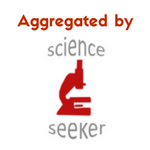Krystal Jacques
Krystal Jacques completed her Master’s degree in the Institute of Medical Science department at the University of Toronto. For her Master’s she studied the embryonic origin of pancreatic stem cells under the supervision of Dr. Derek van der Kooy, where she developed an interest in both photography and science communication. She is currently building her own business as an artist. As a scientist turned artist, she hopes that she can tell stories through visual and written media. You can find her on Instagram @krystaljacques
Posts by: Krystal
Biodegradable electrodes stimulate neural precursor cells to expand and migrate
Imagine a one-and-done treatment for stroke using the regenerative capacity of your brain. Tianhao Chen, Dr. Cindi Morshead’s lab, and Dr. Hani E. Naguib’s lab have developed a biodegradable electrode that can electrically stimulate neural precursor cells (NPCs). This procedure is effective because neurons are electrosensitive cells that can respond to electrical signals. Neurons’ electrosensitivity […]
The first pancreatic organoid with all pancreatic cell types
The pancreas is an organ that is critical for the digestion of our food and for releasing hormones into the bloodstream, which helps regulate blood sugar levels. The three main types of cells responsible for making these functions happen are: endocrine cells, acinar cells and duct cells. You most likely have heard of beta cells […]
Freeze-thawing neural stem cells
There are many ways the regenerative potential of cell transplantation therapy can be optimized to pave the route to the clinic. They include, but are not limited to, deciding which cells to transplant and looking at whether we should use fresh cells or cryopreserved cells. For example, there are different types of neural stem cells […]
Assembloids to model sensory neurological pathways
In current organoid technologies, human pluripotent stem cells are guided to differentiate into 3D structures that resemble the corresponding human in-vivo organ, which allows researchers the opportunity to study the organ’s specific cells and function. However, organoids are limited by their inability to mimic circuits or interactions between cells of different organs. Building on their […]






Comments